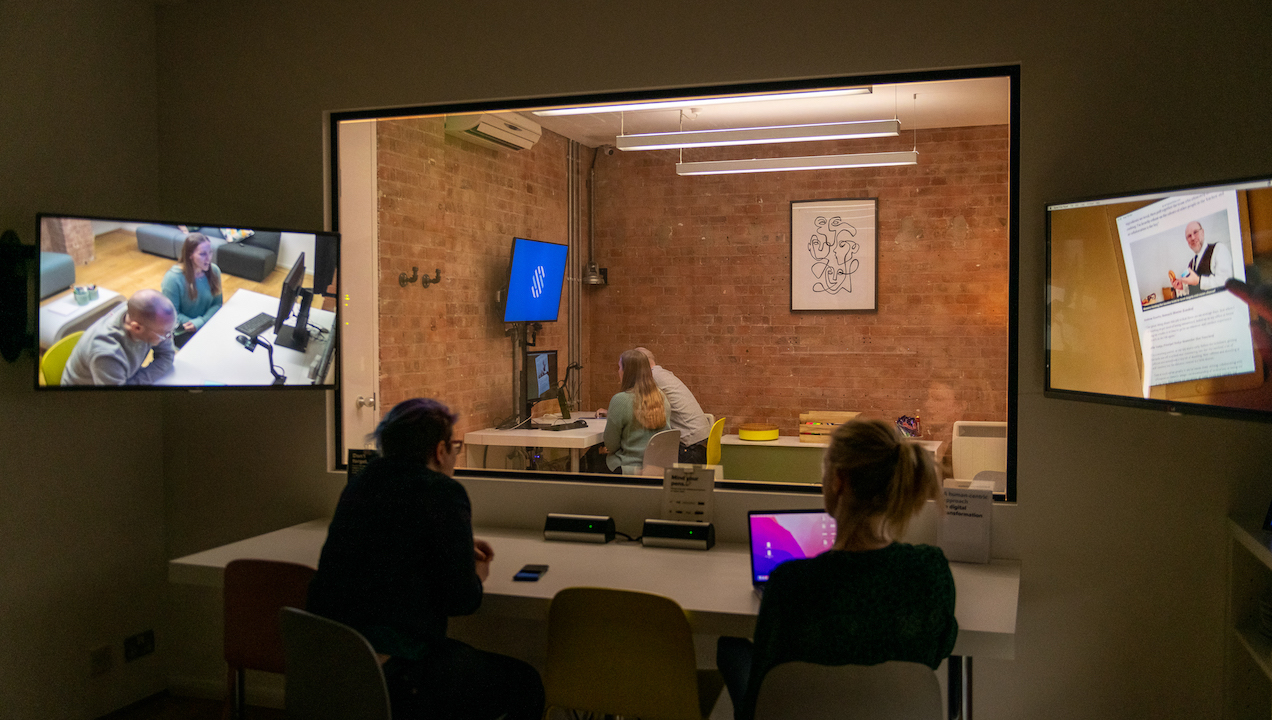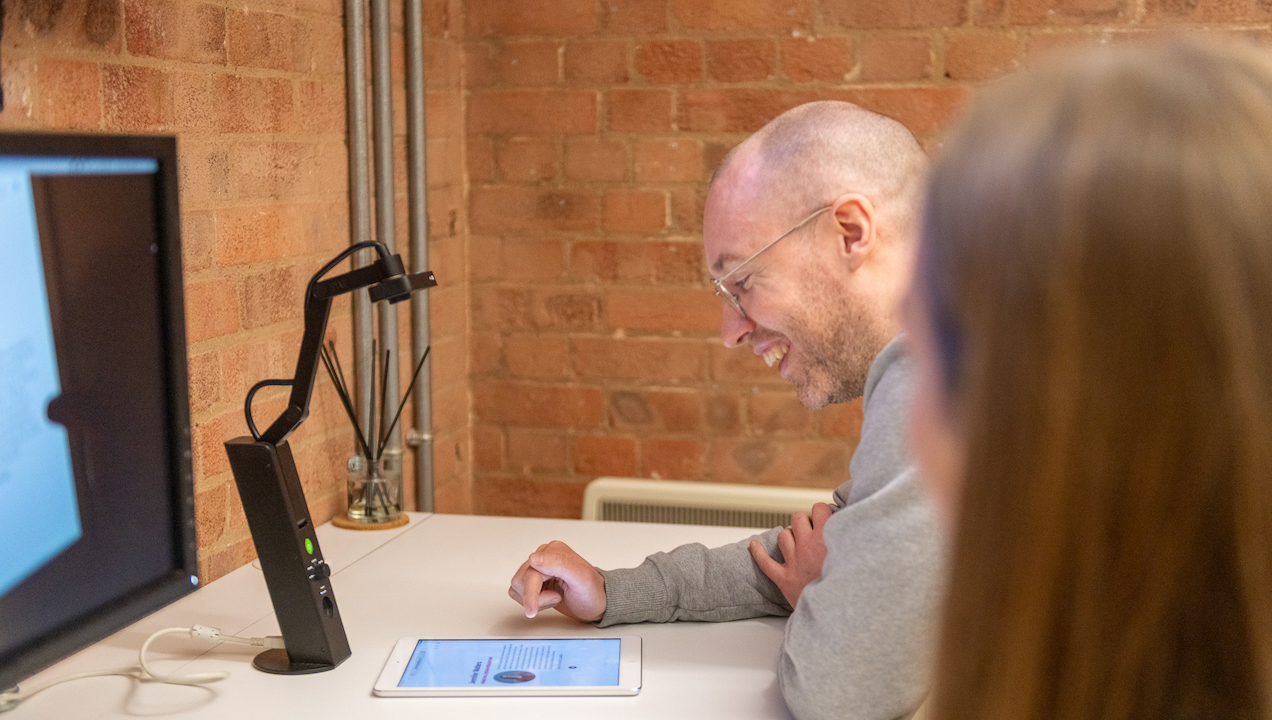Linguistics and Power Dynamics in IDIs
In-depth interviews are a delicate balancing act between getting what research objectives require in a limited time-frame, while also fostering an atmosphere that is conducive to making the participant comfortable and open to disclosing sometimes personal information to a stranger. From the get-go, the interviewer’s language choice significantly influences their positioning and sets the tone. As a life-long language enthusiast, I was keen to explore how language can be a tool to balance power, set expectations, and frame questions in a way that unlocks authentic responses while ensuring a positive participant experience.

Careful use of linguistics can help Researchers to create a collaborative, open atmosphere with participants
Balance of power
Researchers are accustomed to engaging in conversations with strangers, and presenting to large groups. From a participant’s perspective, a researcher can appear to exude confidence. Of course, the reality is that this confidence often comes not from some innate self-belief, but from knowing your topic and discussion guide intimately, and from years of practice. However, being interviewed by a highly confident and direct person can be a little daunting and intimidating to some participants.
To foster a collaborative and open atmosphere, various linguistic tools can be integrated into the discussion guide in order to make the participant feel more at ease. Some socio-linguistic tools such as employing hedges (see examples later) as well as using tentative language, such as using phrases like ‘if any’ or ‘if at all,’ helps balance power dynamics and creates a more inclusive environment.
Creating a discussion guide by using submissive and tentative language, can assist the moderator in adopting a more approachable and cooperative demeanor. It can also help ensure an even tone and to try to mitigate the potential impact of varying moderator styles on participant responses.
For instance, compare the directness of asking, “How much do you earn?” to a more hedged approach: “If you feel comfortable sharing, what is your approximate annual income range?” This shift in tone can encourage participants to share information more willingly and contributes to a more positive participant experience.
Reframing the why
As researchers, it’s drilled into us to ask ‘why/why not’ every step of the way.
But it’s not that simple.
Take the following example, which will look familiar to most researchers:
How did you feel about that?
Probe: Why/why not?
I know plenty of instances where participants have become irritated, defensive and even sometimes aggressive, during sessions. The why is sometimes the cause.
Defense mechanisms
Phrasing the why in a direct way can sometimes create friction. Some participants push back in response to this question structure. A dry ‘why?’ can be seen as a face-threatening act, and therefore could be perceived as a challenge or accusation. This can trigger a defensive response, if they feel they are being asked to justify their choices. There could also be an interpretation that the moderator is being judgmental, implying that the person needs to explain or defend themselves.
Frustration
The participant may not have given much thought to their actions or motivations, and might feel frustrated about being asked to dig deeper. If the person doesn’t fully understand the question, or feels uncertain about their own motivations, they might respond negatively out of frustration or discomfort. Some may prefer not to delve into the reasons behind their actions, or they might find the question unnecessary or intrusive, leading to a negative response. These are all understandable reactions.
Repetitive Style
Some interview guides can be repetitive in style, with why coming up repeatedly, at the end of every section. Being asked the same question repeatedly to justify and explain their actions can irritate the participant, especially if they feel the interviewer is retreading old ground. Watch out for responses such as “As I’ve already mentioned…” and “Like I said before…” Those are your cues that you are on thin ice.

Framing questions in a non-judgemental, empathetic way can lead to better interaction with participants
Context and subject matter
It’s vital to consider the context and subject matter. Usability testing and exploratory interviews require different approaches. Asking participants why they clicked on the blue button differs enormously to asking them why they feel or behave a certain way, as the latter is intertwined with feelings of identity. A person’s emotional state at the time of the question can significantly impact their response. If they are already stressed, anxious, or upset, they may be more likely to react negatively. Be prepared to offer to end the interview or take a break in these instances.
Setting expectations
As well as these techniques, it’s always a good idea to set expectations for the participant, and mention upfront that they will be asked lots of questions and that we’ll be digging into their motivations, which is an important purpose of the research session. This will need to be done separately to the NDA/consent preamble, which sometimes leaves the participants glassy-eyed.
Why, though?
Nonetheless, it’s still essential that we get to the why, so thought needs to be given as to how the why can be approached in a less confrontational way, which might elicit a more open and thoughtful response.
Framing questions in a non-judgmental, empathetic way can help mitigate negative responses and may lead to a more open interaction and a less defensive response.
The use of the conditional tense puts the power in the participants’ hands, and empowers them to explain their thoughts or actions in more detail without being confronted or asked to justify their actions.
Here are some scripts that can be used as an alternative to the why, framed in a way that prompts participants to explicitly state their reasoning.
‘Could you help me understand the thinking behind…?
‘How come…?”
‘Let’s dig into that a little more, can you elaborate on that?’
‘What do you think led you to…?’
‘Could you tell me more about that?’
‘How did you come to that conclusion?’
‘I’d love to hear a bit more about your thought process…?’
In essence, care needs to be taken to ensure that we avoid the participants feeling triggered in all the ways mentioned here. Linguistics plays a huge role in mitigating that risk, but also a skilled moderator needs to take part in active listening and look out for cues to know when to stop pushing, change the topic, or try a different approach.
